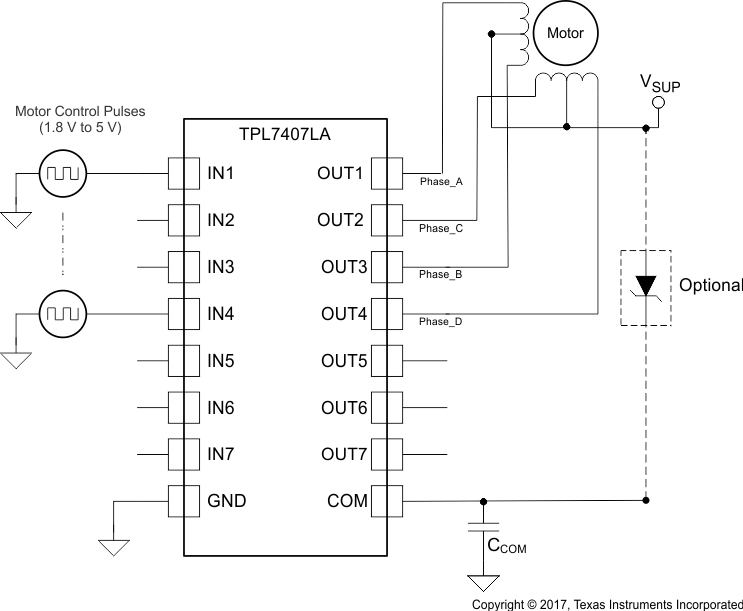ZHCSGA2A May 2017 – May 2018 TPL7407LA
PRODUCTION DATA.
- 1 特性
- 2 应用
- 3 说明
- 4 修订历史记录
- 5 Pin Configuration and Functions
- 6 Specifications
- 7 Detailed Description
- 8 Application and Implementation
- 9 Power Supply Recommendations
- 10Layout
- 11器件和文档支持
- 12机械、封装和可订购信息
封装选项
机械数据 (封装 | 引脚)
散热焊盘机械数据 (封装 | 引脚)
- D|16
订购信息
8.1.1 Unipolar Stepper Motor Driver
 Figure 7. Stepper Motor Driver Schematic
Figure 7. Stepper Motor Driver Schematic Figure 7 shows an implementation of the TPL7407LA for driving a uniploar stepper motor. The unconnected input channels can be used for other functions. When an input pin is left open the internal 1-MΩ pull down resistor pulls the respective input pin to GND potential. For higher noise immunity use an external short across an unconnected input and GND pins. The COM pin must be tied to the supply of whichever inductive load is being driven for the driver to be protected by the free-wheeling diode.
For more information on this application, see the Stepper Motor Driving With Peripheral Drivers (Driver ICs) application report.